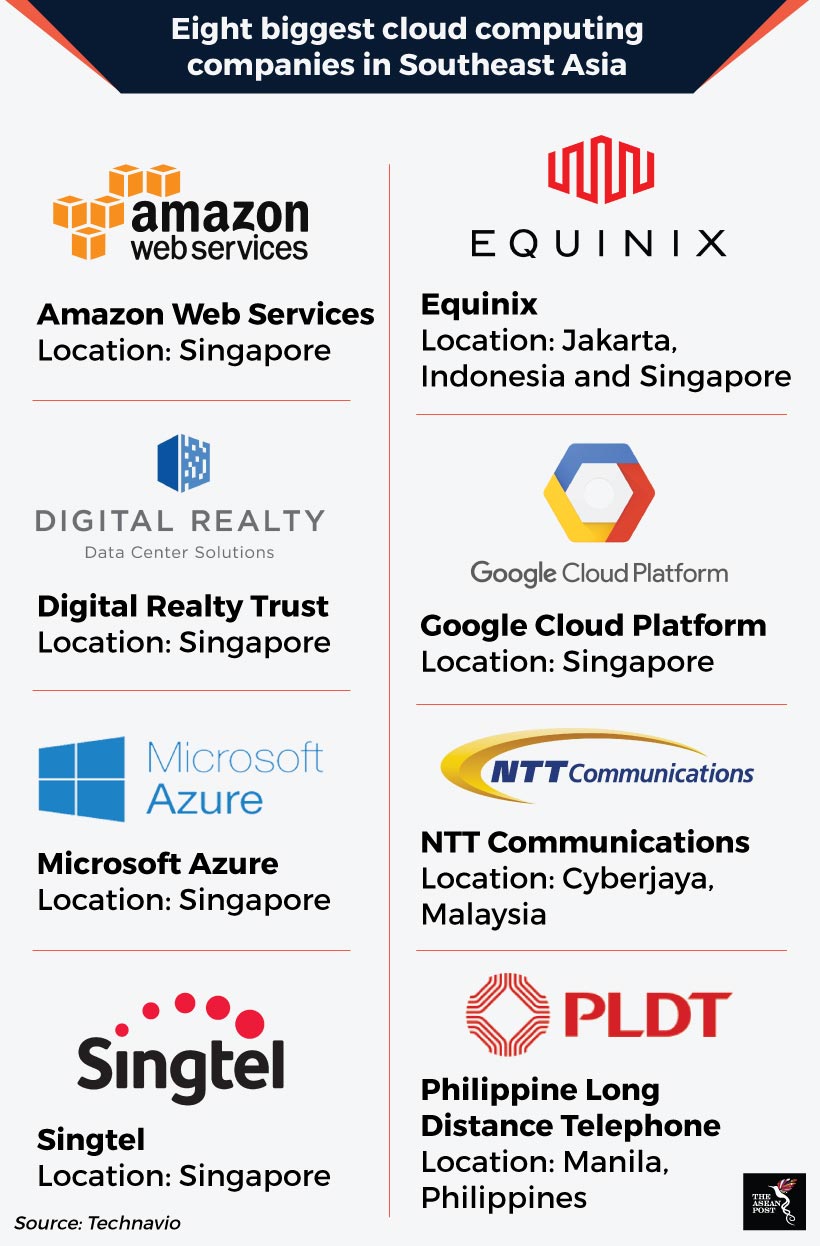A key component of the digital revolution that has swept the region is the introduction of cloud computing. Cloud computing is the practice of using a network of remote servers hosted on the internet to store, manage and process data instead of using a local server. Cloud computing has become popular among smaller, growing businesses because usually, using a cloud service is cheaper than installing a local server.
The boom of cloud computing in the world is parallel to the demand for data. Access to data has been key in driving and helping small businesses grow, improving e-commerce and developing Artificial Intelligence (AI). Cloud service providers such as Amazon Web Service, Google Cloud Platform and others offer services where you can store and access data. These services also provide business solutions from their data analytics.
According to a report by the Lee Kuan Yew School of Public Policy and Microsoft released in 2017, ASEAN could benefit a lot from the introduction of cloud computing in the region. “Cloud computing is a technology whose time has come, especially for the Association of Southeast Asian Nations (ASEAN),” the report says.
Business tech website, Data Economy reported in July 2017 that the multi billion dollar Southeast Asia data centre market is forecasted to grow based on data from Technavio, a tech-based market research firm. The value of the regional data centre market is forecasted to double in the next four years. “The increase in the demand for cloud-based services is a key factor driving market growth,” said Rohan Joy Thomas, a lead analyst at Tehcnavio.
With a digital economy that’s projected to grow to US$200 billion a year in 2025 coupled with the high potential of cloud computing in the region, it is no wonder that companies are rushing into the region with their cloud computing services
.
Google is one of the biggest firms in the cloud storage industry and has just launched Google Cloud in Singapore last July – making it the first Google Cloud Platform (GCP) in Southeast Asia. Prior to this, the closest Google Cloud Centre was in Taiwan. The launch of the Google Cloud Platform in Singapore makes it the third one in Asia, after Taiwan and Japan.
With the opening of this new Google Cloud Platform, Google claims 51% to 98% reductions in round-trip time (RTT) latency when serving customers in Singapore, Jakarta, Kuala Lumpur, and Bangkok compared to using the other GCPs in Taiwan or Tokyo. Major startups like Go-Jek and Carousell have already begun adapting Google Cloud into their businesses.
However, Google faces stiff competition from other firms who have set up base in the region. Among them, Amazon Web Service offered by Amazon who set up shop in Singapore in 2010.
Meanwhile, Alibaba is also stepping up its game in the region. Alibaba Cloud’s International headquarters is already in Singapore and in October 2017 they launched the Malaysian Alibaba Cloud data centre. Jack Ma announced in September 2017 the company’s plans for an Indonesian data centre too.
Another major competitor in the cloud computing market is Microsoft’s Azure, who currently have a data centre in Singapore. According to the Data Economy report mentioned earlier, the eight biggest cloud computing companies in the region are Amazon Web Service, Digital Realty Trust, Equinix, Google, Microsoft, NTT Communications, Singtel and Philippine Long Distance Telephone.
According to a news report by the Financial Times in October 2017, there is a large demand for cloud computing services in the region, which explains the “…aggressive hiring of engineers and building of data centres, particularly by Alibaba and Google.”
“There’s an arms race with cloud,” said Niranjan Asratnam, global head of the Technology, Media and Telecommunications sector of Linklater in Singapore.
The competition looks like it won’t end any time soon. In fact, it is only just beginning.
Recommended stories:
